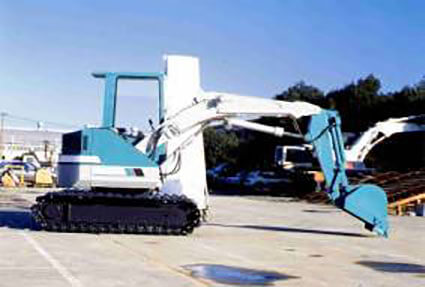1980
More and more innovative technologies were applied to products with a heavy focus on hydraulic shovels. Using mechatronics for engine control was one of the examples of Japan's advanced electronics technology that surpassed the world standards.

Minimal rear-swing radius Hydraulic excavator that allows the body to turn within the width of the crawler was under development by several companies in 1982 and Komatsu was one of the later ones to join. PC50UU was designed based on PC40, and its turning radius was 1m. Komatsu made and enormous effort to figure out how to make pluming, control devices, and the exterior compact, keeping a good balance. This machinery earned a good reputation in the marketplace and received a G mark (good design award) from the Minister of International Trade and Industry in 1987.
Weight: 5100kg, Bucket capacity: 0.2m3
Hydraulic excavator
Since its first emergence in 1951, it took only 50 years for the hydraulic shovel to establish its primary position on construction sites worldwide. Its size ranges from mini to super size depending on the scale of construction, and during the half century, it kept evolving by achieving a minimum rear-swing radius and adapting styles that would work with characteristics of each site. Mirroring the movement of a human hand, a hydraulic shovel will continue to evolve during the 21st century.